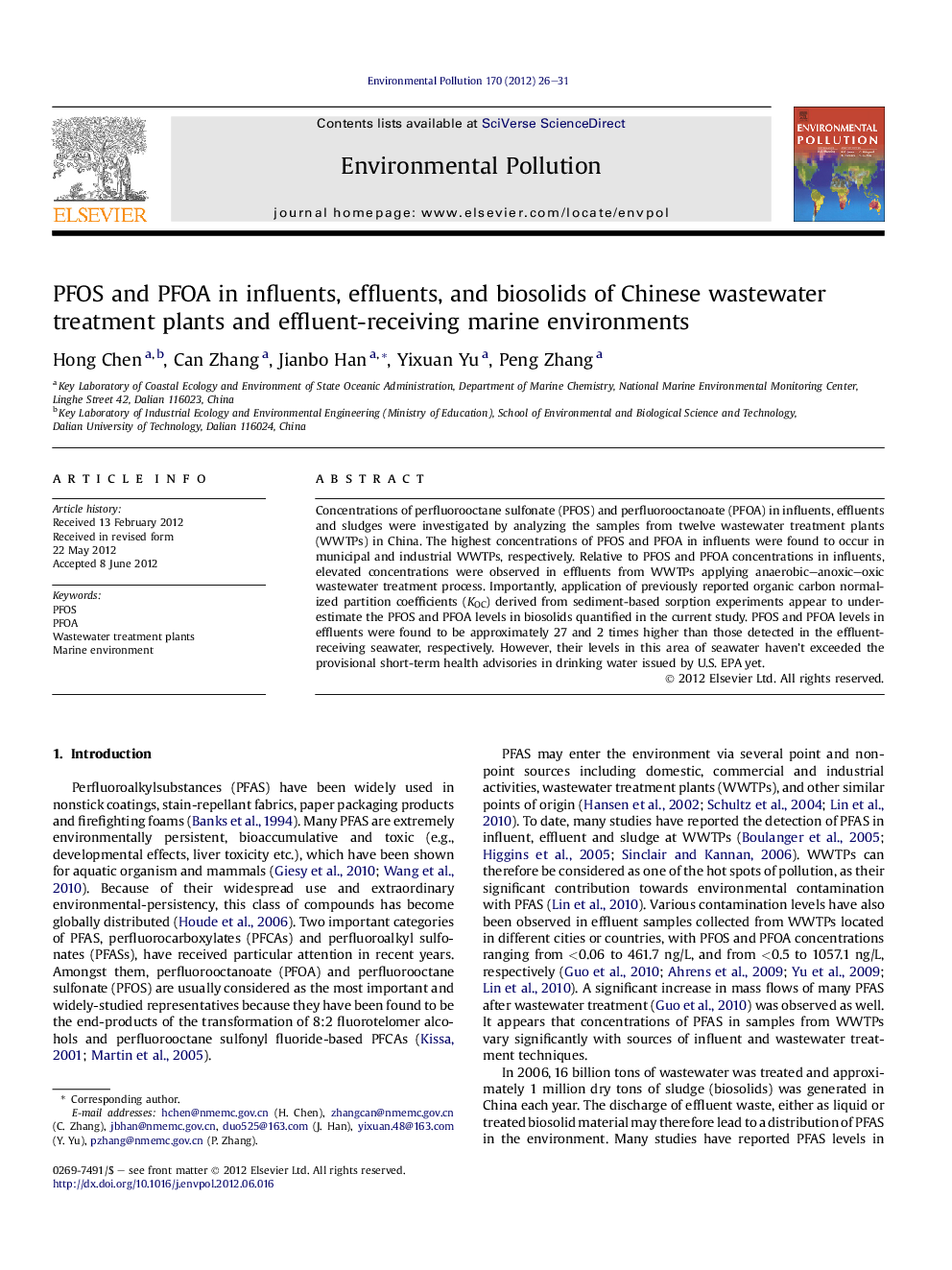| Article ID | Journal | Published Year | Pages | File Type |
|---|---|---|---|---|
| 4424749 | Environmental Pollution | 2012 | 6 Pages |
Concentrations of perfluorooctane sulfonate (PFOS) and perfluorooctanoate (PFOA) in influents, effluents and sludges were investigated by analyzing the samples from twelve wastewater treatment plants (WWTPs) in China. The highest concentrations of PFOS and PFOA in influents were found to occur in municipal and industrial WWTPs, respectively. Relative to PFOS and PFOA concentrations in influents, elevated concentrations were observed in effluents from WWTPs applying anaerobic–anoxic–oxic wastewater treatment process. Importantly, application of previously reported organic carbon normalized partition coefficients (KOC) derived from sediment-based sorption experiments appear to underestimate the PFOS and PFOA levels in biosolids quantified in the current study. PFOS and PFOA levels in effluents were found to be approximately 27 and 2 times higher than those detected in the effluent-receiving seawater, respectively. However, their levels in this area of seawater haven't exceeded the provisional short-term health advisories in drinking water issued by U.S. EPA yet.
► Levels of PFOS and PFOA in influents, effluents and sludge from Chinese WWTPs were examined. ► Municipal sewage was the main source for PFOS in Chinese WWTPs, while industrial sewage for PFOA. ► PFOS and PFOA concentrations in effluents were much higher than those in receiving seawater.
